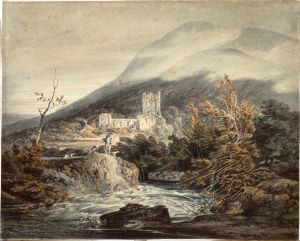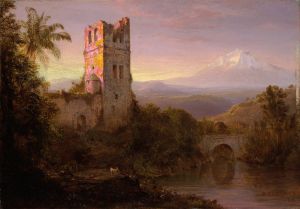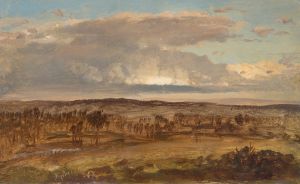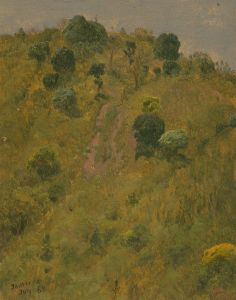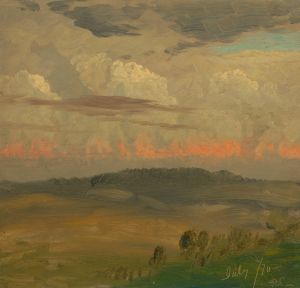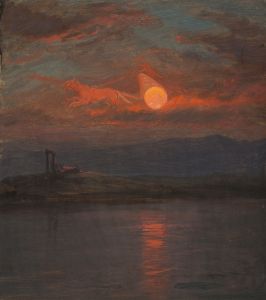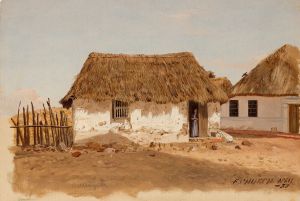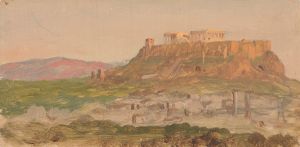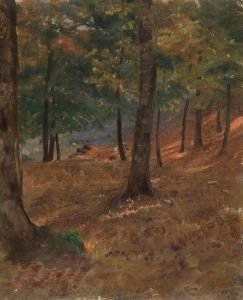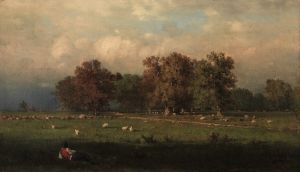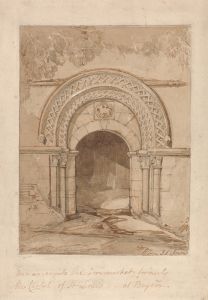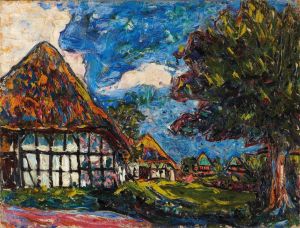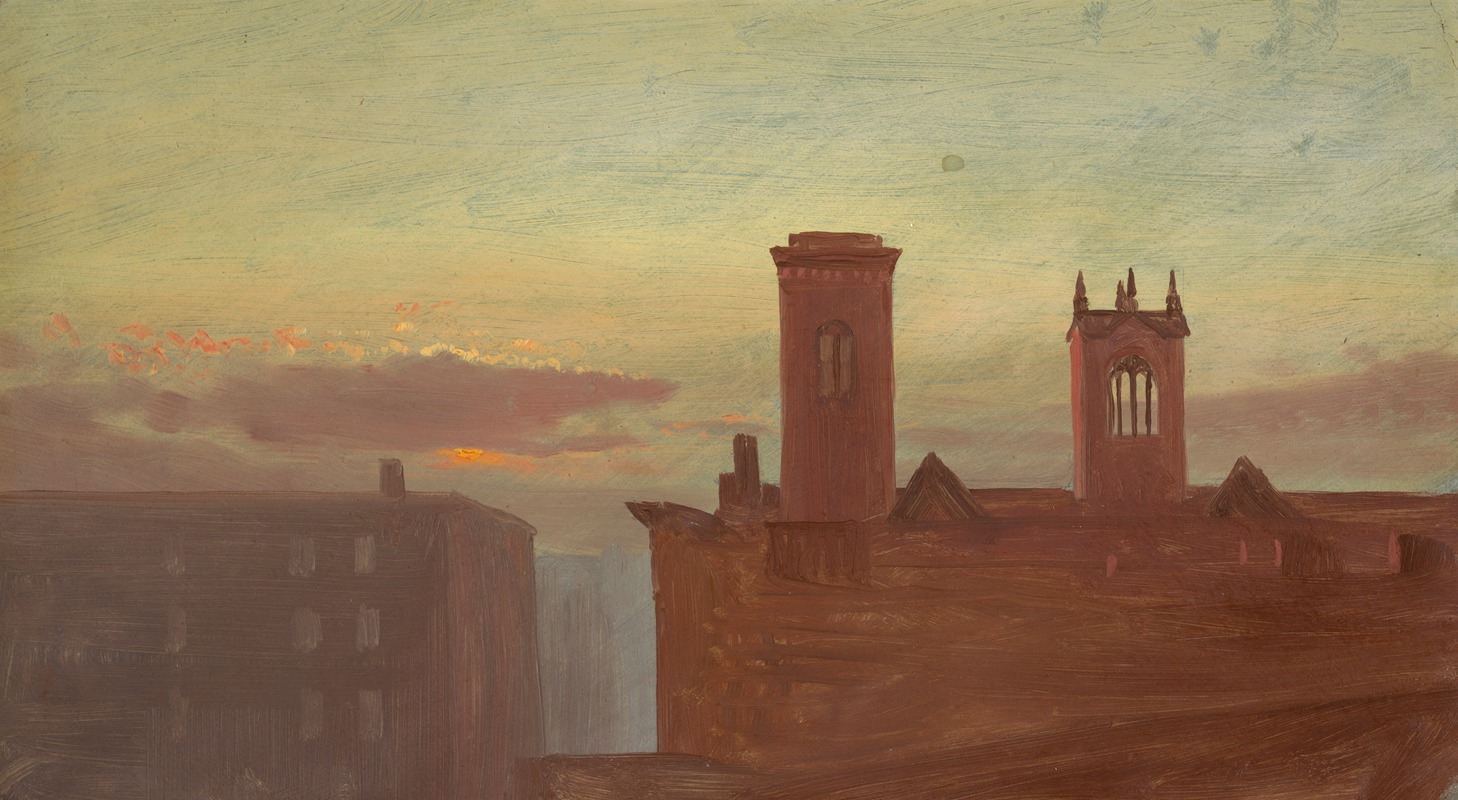
Housetops
A hand-painted replica of Frederic Edwin Church’s masterpiece Housetops, meticulously crafted by professional artists to capture the true essence of the original. Each piece is created with museum-quality canvas and rare mineral pigments, carefully painted by experienced artists with delicate brushstrokes and rich, layered colors to perfectly recreate the texture of the original artwork. Unlike machine-printed reproductions, this hand-painted version brings the painting to life, infused with the artist’s emotions and skill in every stroke. Whether for personal collection or home decoration, it instantly elevates the artistic atmosphere of any space.
"Housetops" is a painting by the American landscape artist Frederic Edwin Church, completed in 1878. Church is one of the most prominent figures of the Hudson River School, a mid-19th century American art movement characterized by its detailed, romantic portrayal of the American landscape.
The painting "Housetops" is a departure from Church's typical grand, sweeping landscapes. Instead, it offers a more intimate, urban view, focusing on the rooftops of New York City. This work captures the essence of the cityscape during the late 19th century, a period marked by rapid urbanization and architectural development.
In "Housetops," Church employs his characteristic attention to detail and mastery of light to depict the varied textures and forms of the buildings. The painting is notable for its use of light and shadow, which creates a dynamic interplay across the rooftops, chimneys, and other architectural elements. The composition is tightly framed, emphasizing the density and complexity of the urban environment.
The painting reflects Church's interest in capturing the changing American landscape, not just in its natural form but also in its built environment. This shift in focus from natural to urban scenes was relatively uncommon among his contemporaries in the Hudson River School, who predominantly celebrated the untouched wilderness of America.
"Housetops" is also significant for its historical context. The late 19th century was a time of significant transformation for New York City, with advancements in technology and construction leading to the rise of new architectural forms and the expansion of the city. Church's painting documents this period of growth and change, offering a glimpse into the everyday life of the city during this era.
Frederic Edwin Church was born in 1826 in Hartford, Connecticut, and studied under the renowned landscape painter Thomas Cole. Church's works are celebrated for their meticulous detail, dramatic compositions, and luminous quality. He traveled extensively, drawing inspiration from various landscapes around the world, including South America, the Arctic, and the Middle East. Despite his broad travels, "Housetops" demonstrates his ability to find beauty and interest in the familiar, everyday scenes of his own country.
Today, "Housetops" is part of the collection at the Metropolitan Museum of Art in New York City. It remains an important work within Church's oeuvre, illustrating his versatility as an artist and his keen observational skills. The painting continues to be appreciated for its historical significance and its artistic merit, offering viewers a window into the urban landscape of 19th-century New York.
In summary, "Housetops" by Frederic Edwin Church is a notable work that captures the urban environment of New York City in the late 19th century. It stands out within Church's body of work for its focus on the built environment and its detailed, luminous depiction of the city's rooftops. The painting is a testament to Church's skill and his ability to find beauty in both natural and urban landscapes.





